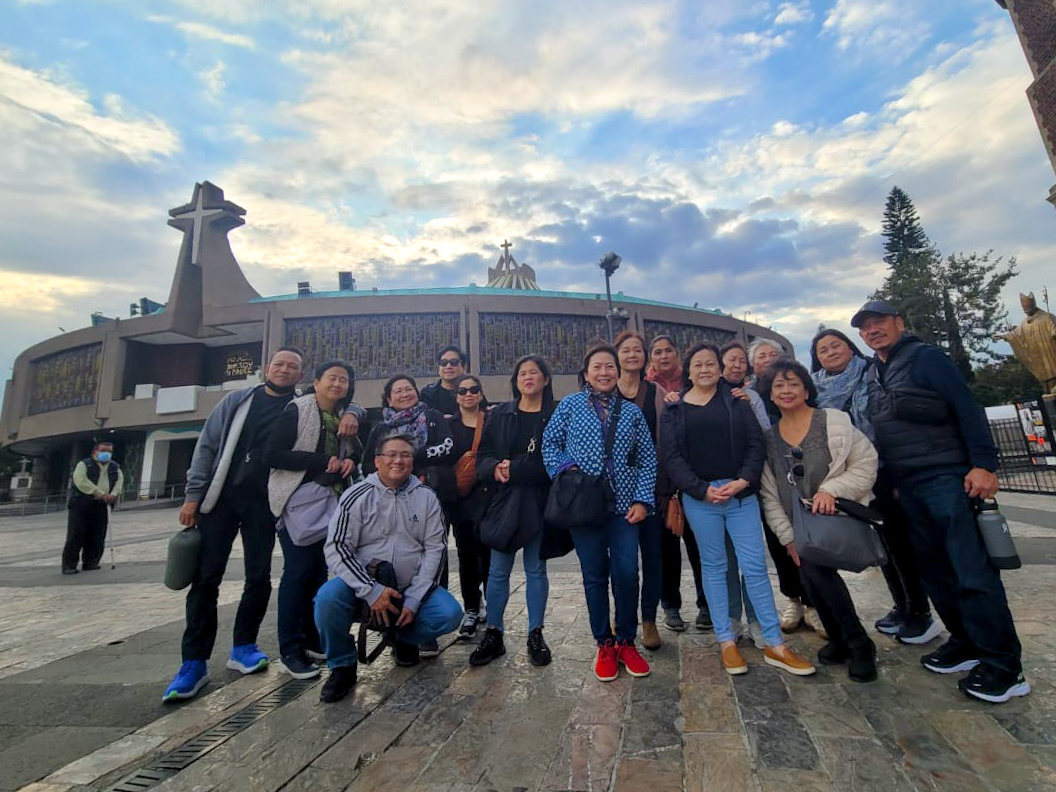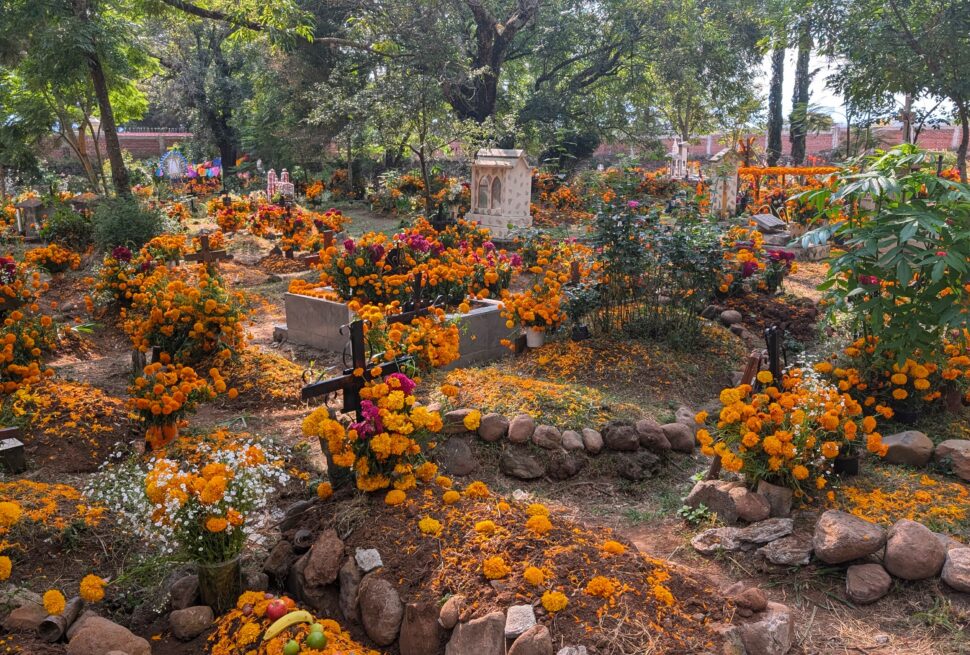Morelia
There are moments in life when you realize you’re part of something much bigger than yourself. This was one of those moments. Our Day of the Dead tour in Morelia wasn’t just about visiting beautiful places—it was about feeling the heartbeat of Mexico’s most sacred tradition.
Arriving in Morelia: A City Wrapped in History
Our journey began in Morelia, where part of our group had already joined us. Walking through the colonial city center felt like stepping into a time capsule. The narrow Callejón del Amor led us into a world slowly being dressed for Día de Muertos. As we approached the main avenues, we saw the first glimpses of marigold flowers (cempasúchil) forming altars along the streets. The government of Michoacán spares no effort in ensuring the celebration is honored with grandeur.
The historic center was adorned with breathtaking altars, sugar skulls, and the unmistakable aroma of incense. Locals transformed into elegant Catrinas, offering photos in exchange for a few pesos—an effort well worth it given the intricacy of their makeup and attire. As the night fell, we ended the day at Morelia’s historic library, where we discovered a collection of ancient books on Día de Muertos dating back to the 1700s.
Pátzcuaro and Janitzio: The Soul of the Celebration
The next morning, we traveled to Pátzcuaro, a town that seems to breathe tradition. Boarding a boat to Janitzio, we sailed across the lake, absorbing the anticipation in the air. Later that evening, we met Daniel, a local guide who led us through Pátzcuaro’s old mansions and ancient churches, where the scent of aged wood lingered in the air.
Just as the day was winding down, something extraordinary happened—a university parade filled the streets. Young students, faces painted as skulls, danced alongside decorated floats featuring massive papier-mâché skeletons. It was a breathtaking reminder that Día de Muertos is not just about remembrance; it’s a joyous celebration that connects generations.
The True Spirit of Día de Muertos: Santa Fe de la Laguna
On November 1st, while many associate Día de Muertos with November 2nd, in Morelia, the belief is that spirits bid their final farewell on the first night of the month. This is the reason behind the famous “alumbrada” ceremonies in the cemeteries.
Our first stop was Capula, a town renowned for crafting clay Catrinas. Later, in Secret cemetery 1, we visited one of the most peaceful and mesmerizing cemeteries I’ve ever seen. Unlike others adorned with intricate floral carpets, this one was a natural paradise, covered in wildflowers, agave plants, and an overwhelming sense of serenity.
Following a trail of marigold petals, we arrived at a home where we were warmly invited inside. Families here have a beautiful tradition—if someone has passed away that year, they host a grand feast open to anyone who wishes to pay their respects. We watched as they prepared nixtamal, the traditional process for making tortillas, and offered our small contribution to the altar—sugar cane and guavas. In return, we were welcomed with a steaming bowl of pozole, reminding us that Día de Muertos is not just about loss; it’s about community and generosity.
A Final Goodbye at Secret cemetery 2 and Tzintzuntzan
As the night deepened, we reached the stunning hilltop church of Secret cemetery 2, surrounded by a cemetery. There, we witnessed the “alumbrada” as candles flickered against the vibrant orange of marigold petals, filling the air with the sacred scent of incense.
Our journey ended in Tzintzuntzan, where an entirely different atmosphere awaited us. Here, Día de Muertos is a true fiesta—live bands played, food vendors served delicious Mexican dishes, and the cemetery pulsed with life. A tourist asked me, “Paco, doesn’t all this noise disturb the families visiting their loved ones?” Curious myself, I approached several locals, and their answer was always the same: “We are proud to share our tradition. We want more people to see how we celebrate our ancestors.”
And that’s the beauty of Día de Muertos. It’s not about mourning in silence—it’s about honoring life, embracing death, and coming together as a community. As I stood there, surrounded by candlelight and laughter, I felt more alive than ever.
Paco
















